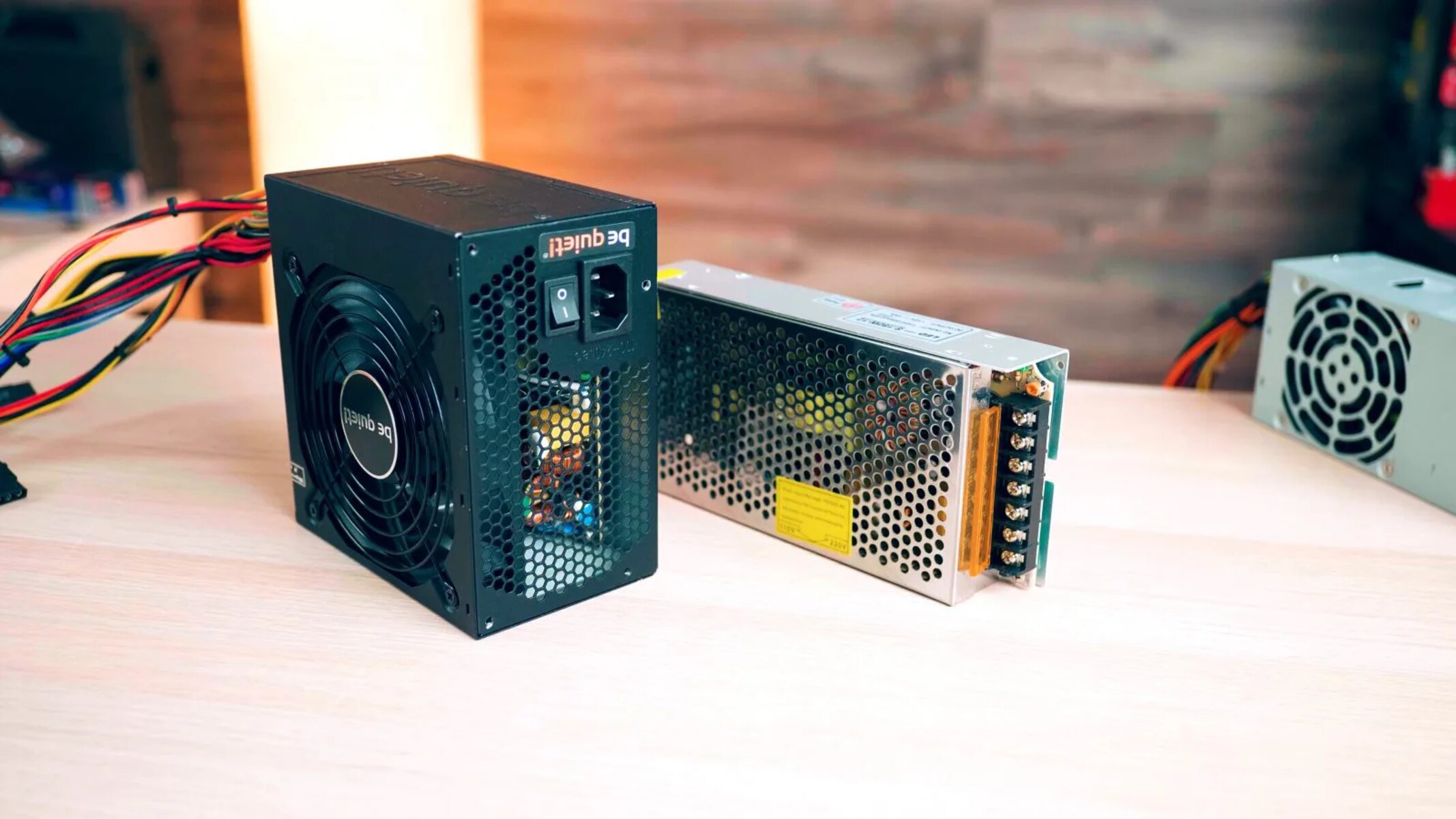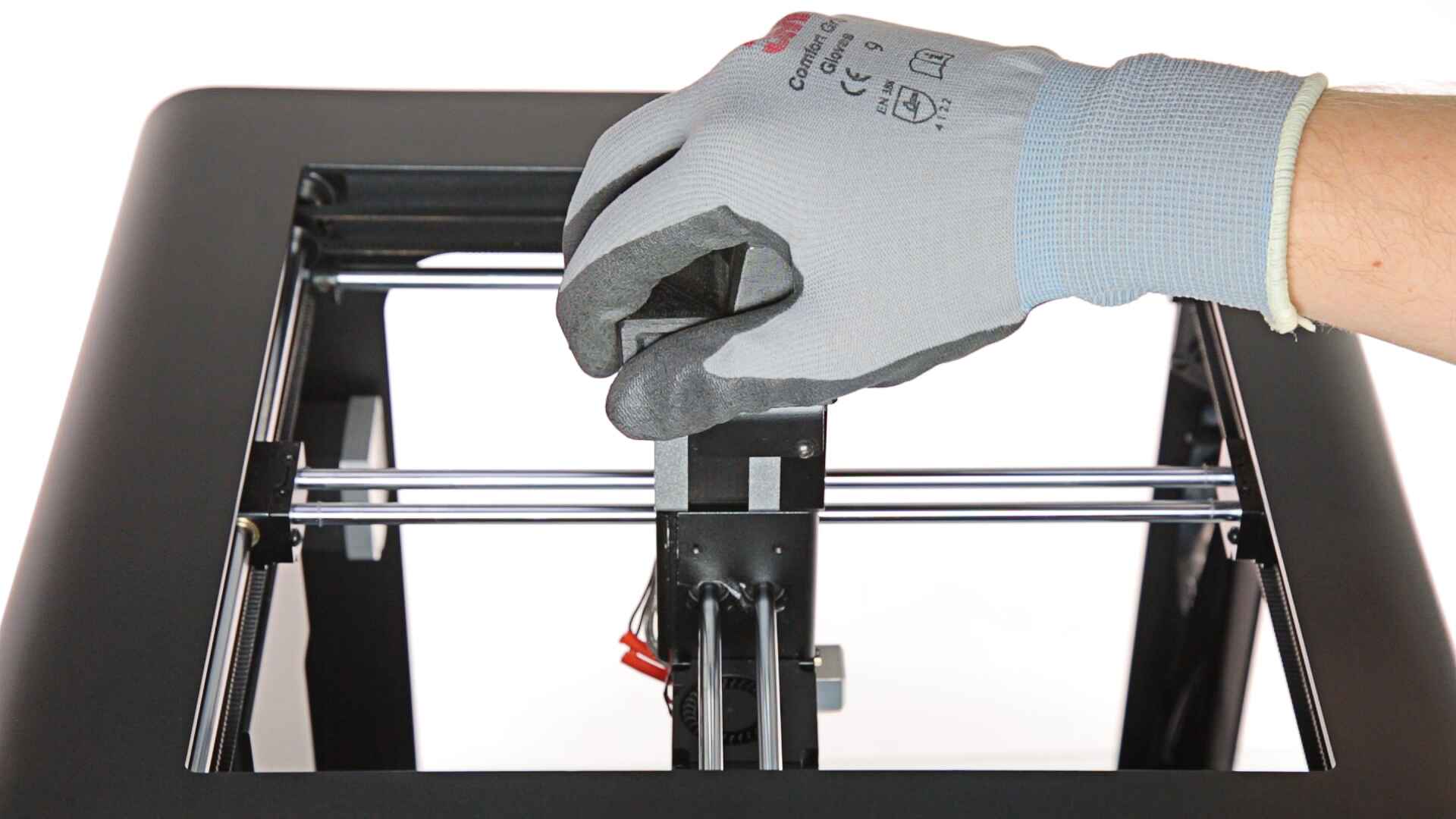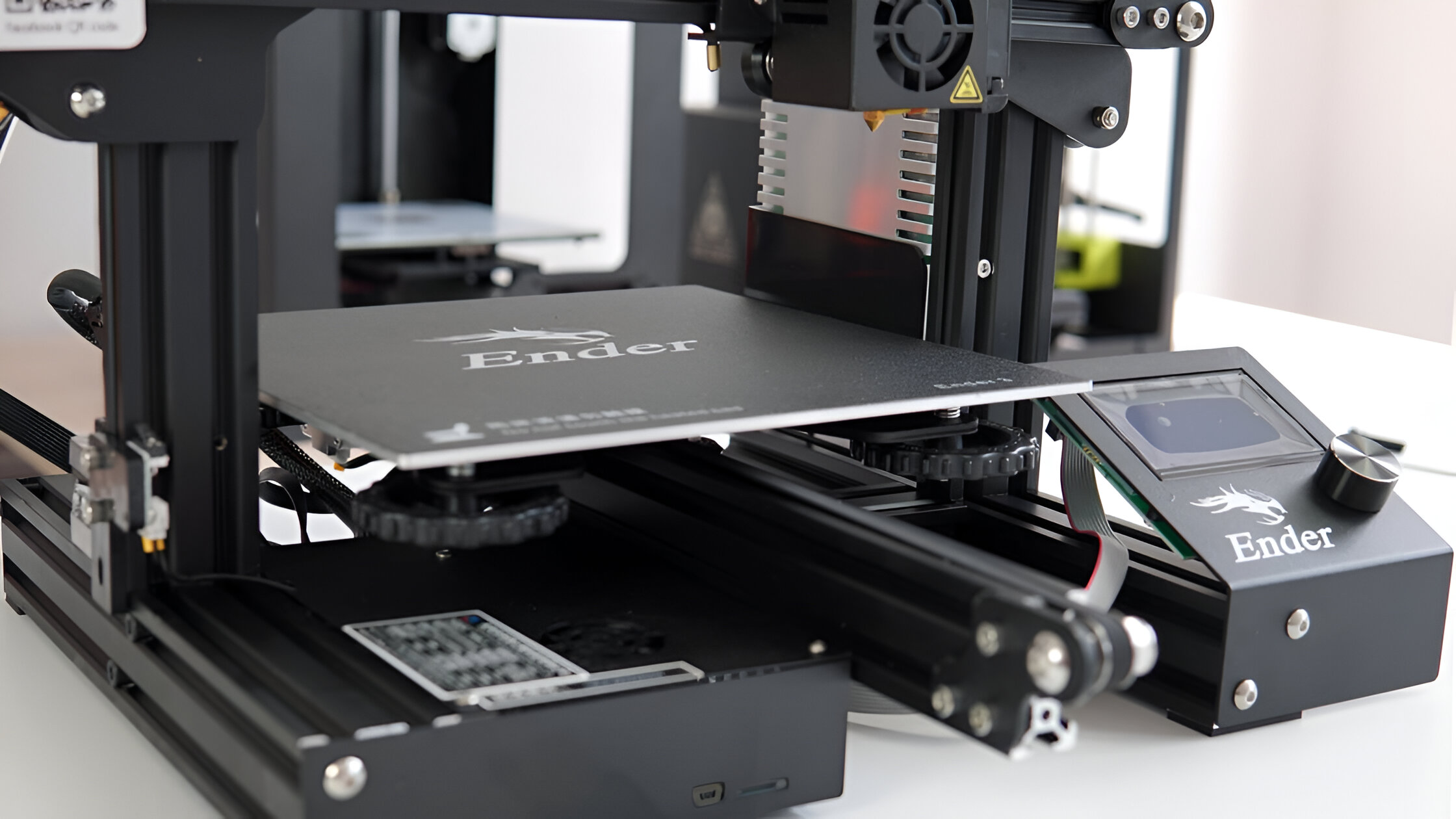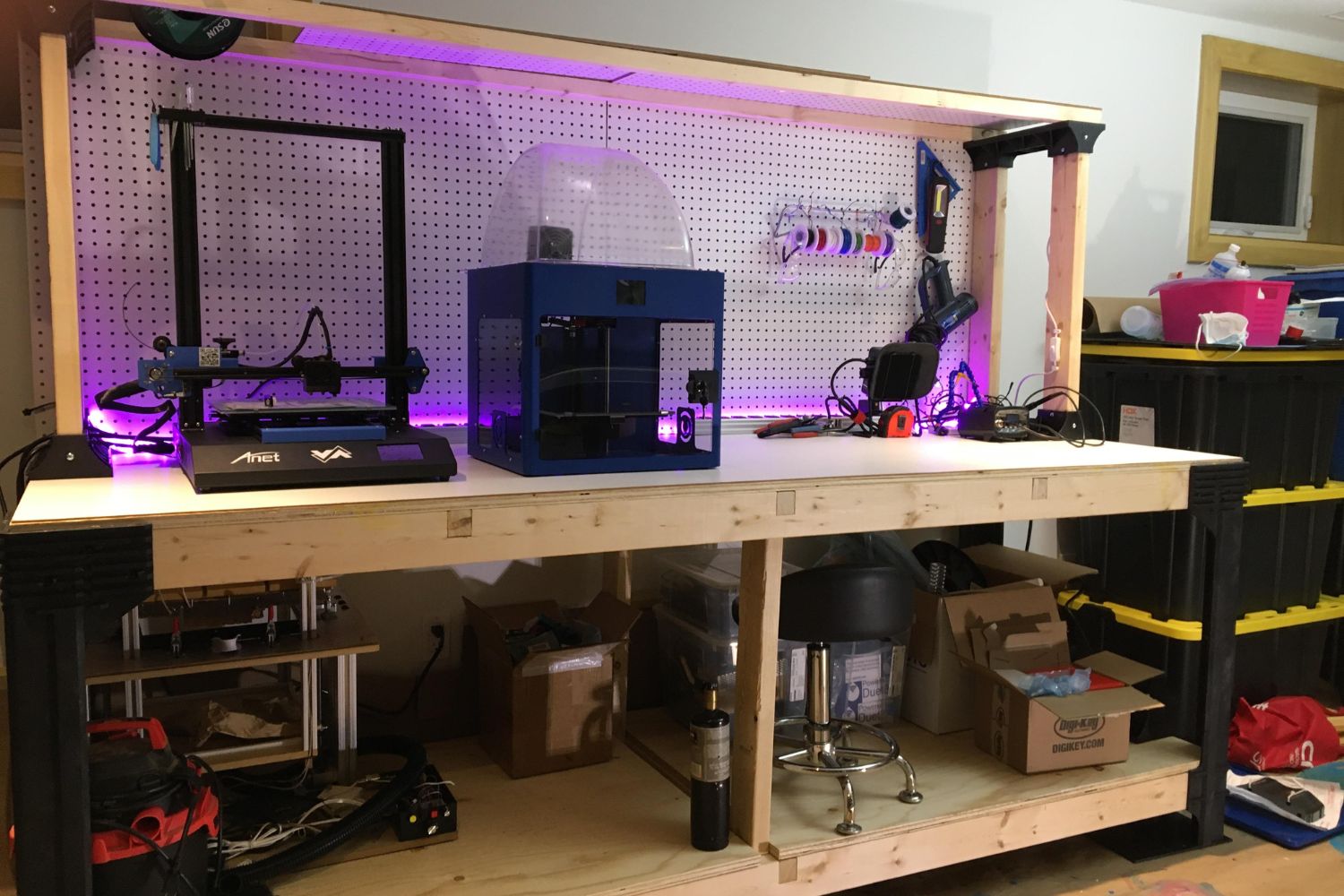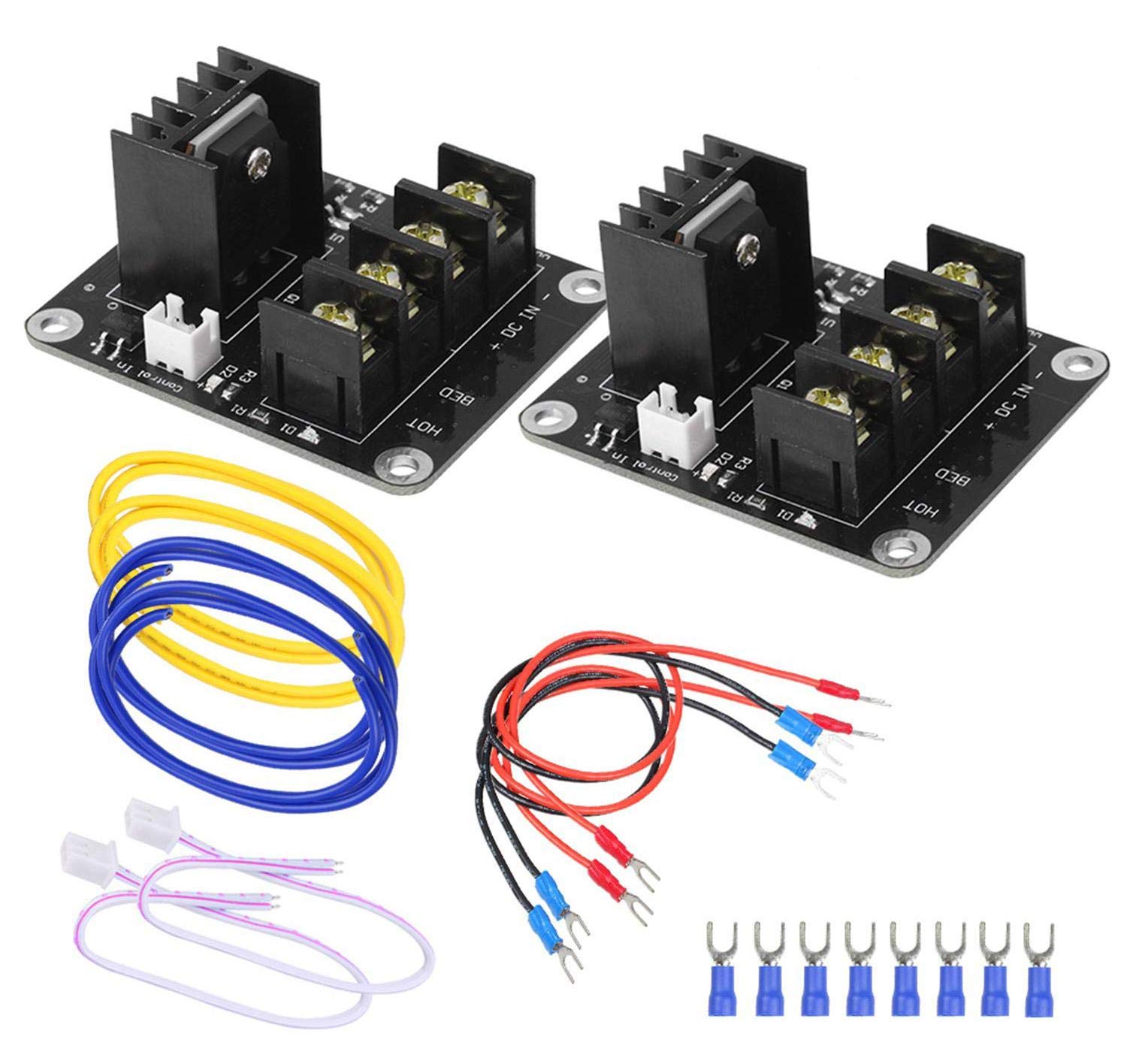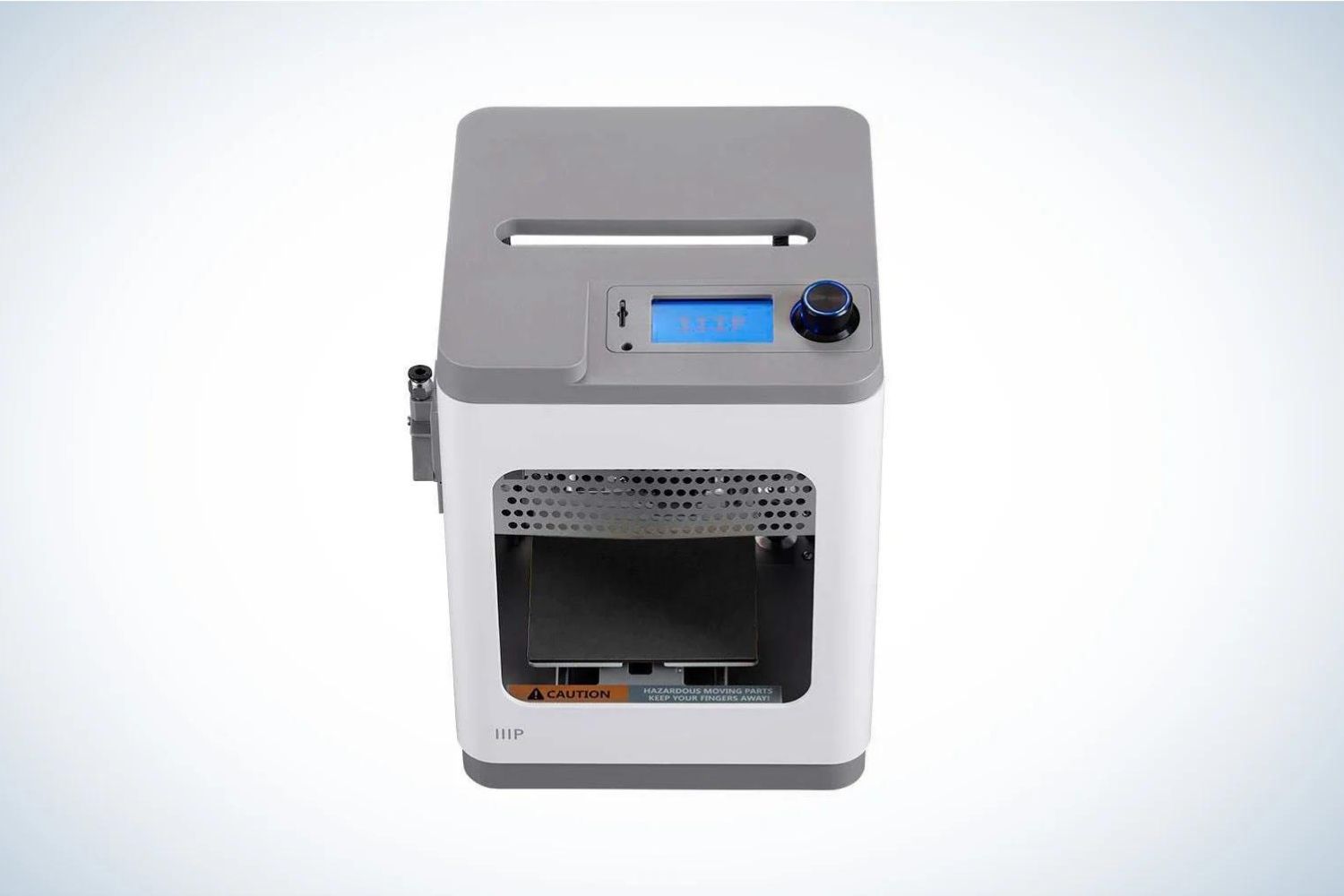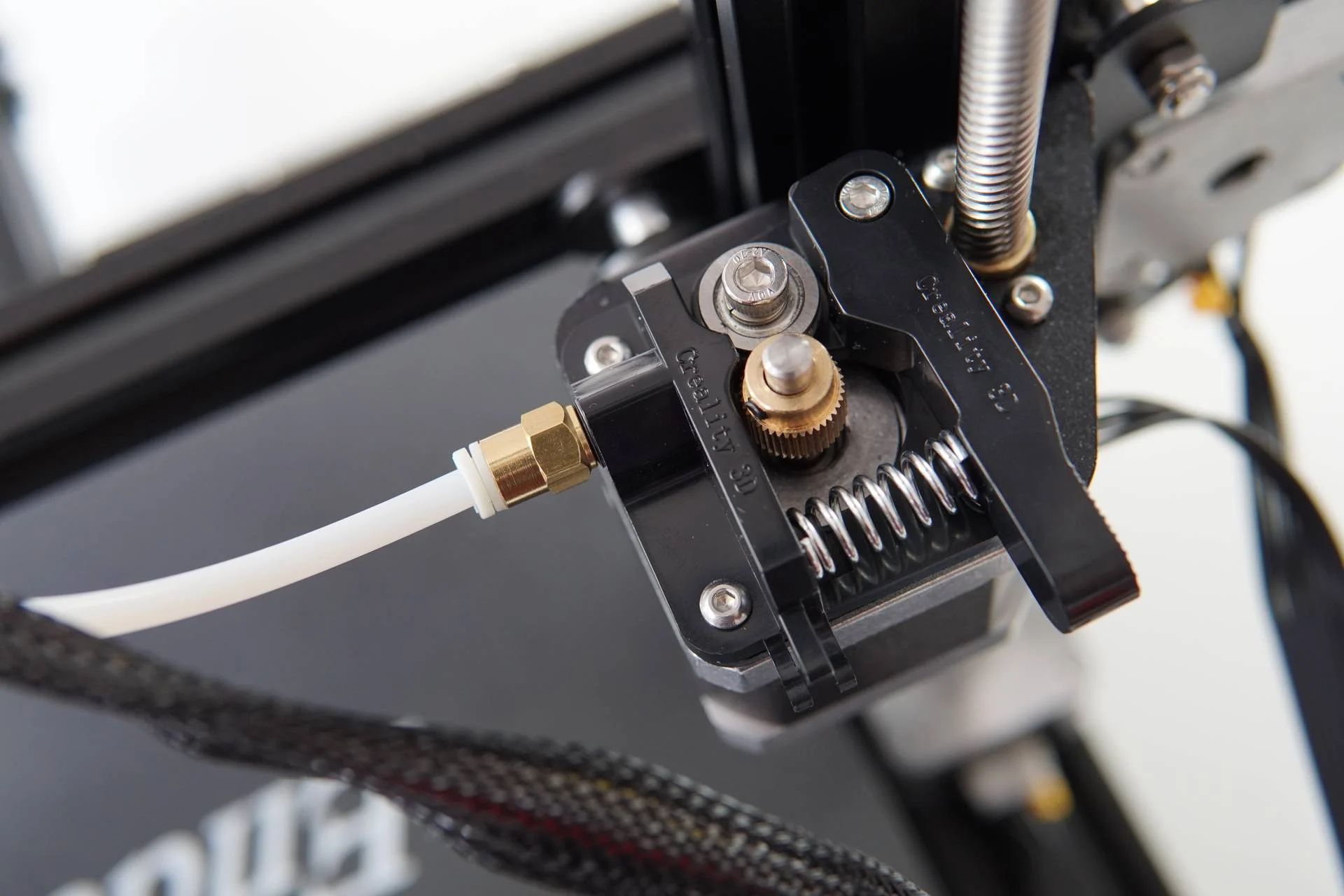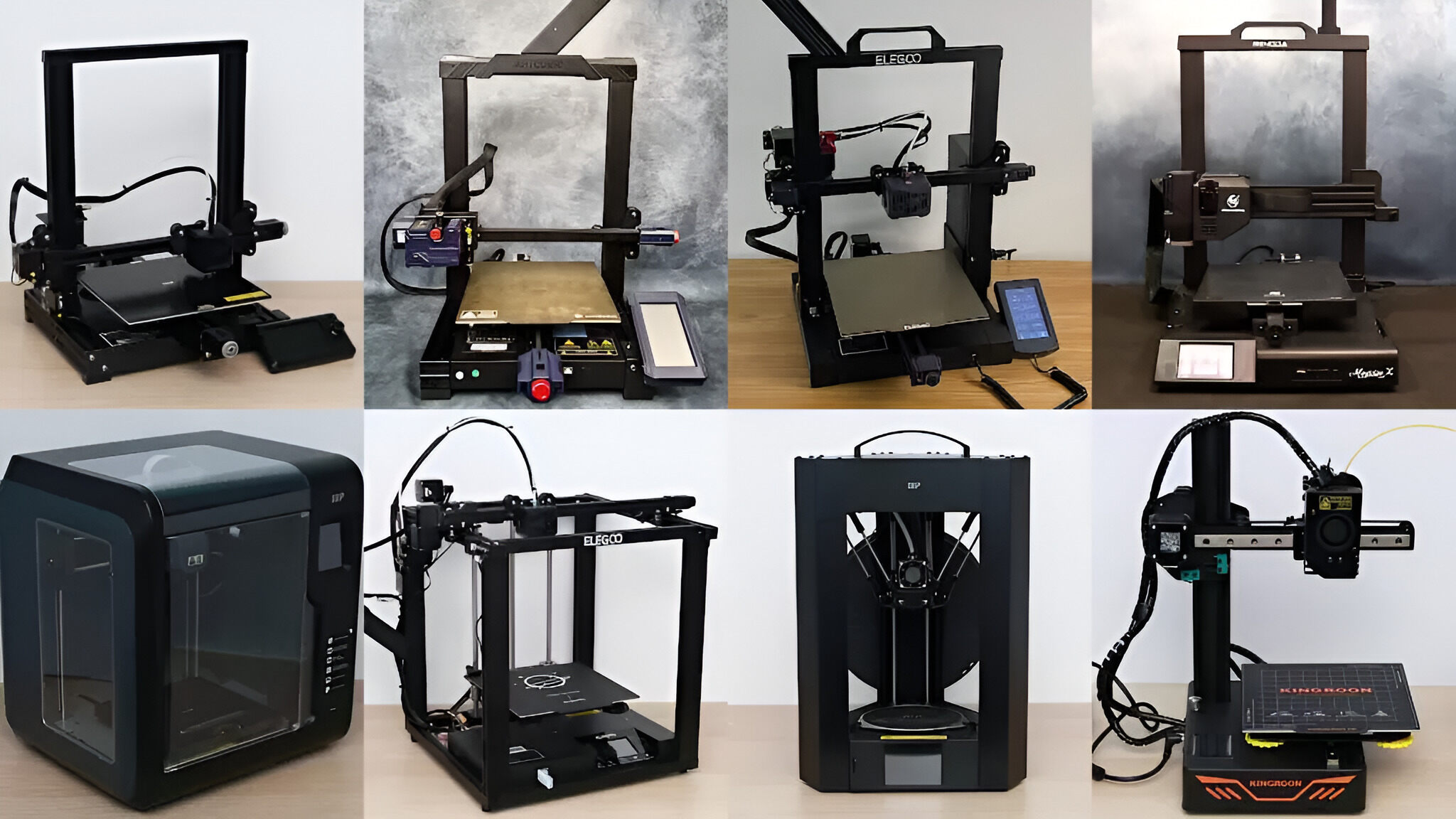Introduction
Welcome to the world of 3D printing, where imagination comes to life! Whether you are a hobbyist, a designer, or an engineer, having a reliable power supply for your 3D printer is essential for a smooth and successful printing experience. The power supply not only provides the necessary electricity to run your printer but also ensures the safety of the entire printing process.
In this guide, we will explore the importance of choosing the right power supply for your 3D printer. We will discuss the various factors that you need to consider, such as voltage and current requirements, safety considerations, and the different types of power supplies available in the market. Additionally, we will provide recommendations for power supplies based on different 3D printer models.
Before we dive into the specifics, let’s take a moment to understand the role of the power supply in a 3D printer. Essentially, the power supply acts as the heart of the printer, converting the AC (alternating current) from your wall outlet into the DC (direct current) needed by your printer’s components.
Having a stable and appropriate power supply is crucial for the performance and longevity of your 3D printer. If the power supply cannot meet the demands of your printer, it may result in print failures, inconsistent quality, or even damage to the printer itself.
Moreover, safety should be a top priority when choosing a power supply. 3D printers require large amounts of power to operate, and improper power supply can pose a fire or electrical hazard. Therefore, it is important to select a power supply that is specifically designed for 3D printers and complies with safety standards.
Understanding Power Supply for 3D Printers
Before we delve into the details of choosing a power supply for your 3D printer, it’s important to have a basic understanding of how they work. A power supply is responsible for converting the incoming AC (alternating current) power from your wall outlet into the DC (direct current) power that your 3D printer requires.
Most 3D printers operate on low voltage DC power, typically between 12V and 24V. The power supply takes the higher voltage AC power from the wall outlet and uses a transformer to convert it to the desired DC voltage. It also rectifies and filters the power to ensure a stable and clean DC output.
The power supply provides power to various components of the 3D printer, including the extruder, heated bed, control board, and motors. Each of these components has different power requirements, and it’s crucial to choose a power supply that can meet those demands.
When selecting a power supply, there are two primary factors to consider: voltage and current.
Voltage: The voltage requirement of your 3D printer is determined by the components it uses. Most printers operate at either 12V or 24V. Higher voltage allows for faster heating and better motor performance. It’s important to ensure that the voltage of the power supply matches the voltage requirement of your printer. Using a power supply with an incompatible voltage can cause damage to your printer.
Current: The current requirement of your printer is determined by the total power consumption of its components. It’s essential to choose a power supply that can provide enough current to meet the demands of your printer. Insufficient current can lead to issues such as underheating of the bed or extruder, decreased motor performance, and unreliable printer operation.
In addition to voltage and current, it’s important to consider other factors such as power efficiency, reliability, and protection features. A highly efficient power supply will convert the AC power more efficiently, resulting in less heat generation and lower energy consumption. A reliable power supply will have a stable output voltage, reducing the chances of voltage fluctuations affecting your printer’s performance. Lastly, protection features like short-circuit protection, over-current protection, and over-temperature protection are crucial for the safety and longevity of your printer.
Now that we have a clear understanding of power supply basics, let’s move on to the factors you need to consider when choosing the right power supply for your 3D printer.
Factors to Consider When Choosing a Power Supply
Choosing the right power supply for your 3D printer requires careful consideration of several factors. Let’s explore these factors in detail to help you make an informed decision.
1. Voltage and Current Requirements: As mentioned earlier, understanding the voltage and current requirements of your 3D printer is crucial. Make sure to check the specifications of your printer’s components and choose a power supply that matches those requirements. It’s always recommended to have some headroom in terms of current capacity to accommodate any upgrades or additional peripherals in the future.
2. Power Efficiency: Look for a power supply that is energy-efficient. Higher efficiency not only reduces power consumption but also minimizes heat generation, ensuring a longer lifespan for the power supply and the printer. Look for power supplies with high-efficiency ratings, such as 80 Plus certification.
3. Reliability: A reliable power supply is essential for the consistent operation of your 3D printer. Look for power supplies from reputable brands that have a good track record. Reading reviews and feedback from other users can also help you gauge the reliability of a particular power supply model.
4. Safety Features: Safety should always be a top priority. Look for power supplies that have safety features such as over-current protection, short-circuit protection, over-voltage protection, and over-temperature protection. These features ensure that your printer and its components are protected from potential electrical hazards.
5. Form Factor and Mounting Options: Consider the physical dimensions and mounting options of the power supply. Ensure that it fits smoothly into your 3D printer’s enclosure or designated space. Some power supplies come with mounting brackets or holes for secure installation.
6. Noise Level: Pay attention to the noise level of the power supply. Some power supplies can generate audible noise due to fan operation or other cooling mechanisms. If noise is a concern for you, look for power supplies that utilize quiet fan technologies or are passively cooled.
7. Compatibility: Ensure that the power supply is compatible with your printer’s control board or electronics. Different printers may utilize different connectors or voltage requirements for the power input. Verify the compatibility before making a purchase.
By considering these factors, you can narrow down your options and choose a power supply that meets the specific needs of your 3D printer. In the next section, we will discuss the voltage and current requirements in more detail to help you make an informed decision.
Voltage and Current Requirements
Understanding the voltage and current requirements of your 3D printer is essential when selecting a power supply. Let’s take a closer look at these two factors and their importance.
Voltage: The voltage requirement of your 3D printer determines the power supply’s output voltage. Most printers operate at either 12V or 24V. Some high-end printers may require higher voltages. It is crucial to match the voltage of the power supply with your printer’s voltage requirement. Using a power supply with incompatible voltage can damage your printer’s components or lead to erratic behavior. Refer to your printer’s specifications or consult the manufacturer’s guidelines to determine the correct voltage.
Current: The current requirement of your 3D printer is determined by the total power consumption of its components. Each component, such as the extruder, heated bed, motors, and control board, has a specific current draw. When selecting a power supply, you need to ensure it can provide enough current to meet the demands of your printer. Insufficient current can lead to issues such as underheating of the bed or extruder, reduced motor performance, and overall unreliable printer operation. It is recommended to choose a power supply that can deliver slightly higher current than what your printer requires, to allow for any future upgrades or expansions.
Calculating the total current requirement for your printer involves adding up the individual current draw of all components. This information can usually be found in the component specifications or the printer’s user manual. However, if this information is unavailable, you can estimate the current requirement by adding a buffer margin to the printer’s rated power consumption. It’s always better to err on the side of caution and choose a power supply with a higher current rating.
It’s important to remember that the power supply’s voltage does not directly affect the current drawn by the printer; it is the printer’s components that determine the current draw. Therefore, when selecting a power supply, focus on matching the voltage requirements and ensuring it can provide enough current for the printer’s components.
When connecting the power supply to the printer, always follow the manufacturer’s guidelines and ensure that the positive (+) and negative (-) terminals are correctly connected to avoid any damage to the printer or power supply. Double-check the wiring and connections before powering on your 3D printer.
By understanding the voltage and current requirements of your 3D printer, you can select a suitable power supply that will provide the necessary power for smooth and reliable printer operation.
Safety Considerations
Ensuring the safety of your 3D printer setup is paramount, and the power supply plays a crucial role in maintaining a safe printing environment. Here are some safety considerations to keep in mind when choosing a power supply for your 3D printer:
1. Electrical Safety: The power supply should comply with electrical safety standards, such as UL (Underwriters Laboratories) or CE (Conformité Européene) certification. These certifications indicate that the power supply has undergone rigorous testing to ensure its compliance with safety regulations. Avoid using generic or uncertified power supplies as they may pose a risk of electrical hazards, such as short circuits or overheating.
2. Overload Protection: Look for a power supply that offers overload protection. This feature detects when the current draw exceeds a safe limit and automatically shuts down or reduces the output to prevent damage to the power supply or printer components. Overload protection can help prevent potential fires or electrical hazards.
3. Short-Circuit Protection: Short circuits can occur if there is a fault in the wiring or connection, resulting in excessive current flow. A power supply with short-circuit protection will detect this and cut off the power to prevent any damage or safety risks. It’s important to choose a power supply that has built-in short-circuit protection to minimize the risk of accidents.
4. Overvoltage Protection: Fluctuations in the incoming AC power can sometimes lead to overvoltage situations. A power supply with overvoltage protection will detect and regulate the output voltage to a safe level, protecting your printer and its components from potential damage or failure.
5. Over-temperature Protection: Due to the continuous operation and heat generated by the power supply, it is crucial to have built-in over-temperature protection. This safety feature monitors the temperature of the power supply and activates a cooling mechanism or shuts down the supply if it exceeds a safe threshold. Over-temperature protection prevents the risk of overheating and potential fire hazards.
6. Grounding: It is vital to properly ground the power supply to minimize the risk of electrical shocks. Make sure to connect the ground wire of the power supply to a reliable grounding point. Check the user manual or consult an electrician if you are unsure about proper grounding methods.
7. Proper Ventilation: Ensure that the power supply has sufficient ventilation to dissipate heat effectively. Adequate airflow helps prevent overheating and extends the lifespan of the power supply. Avoid obstructing the vents or placing the power supply in a confined space where heat buildup can occur.
8. Fire Safety: When selecting a power supply, opt for units with good fire safety ratings. Look for power supplies that are made from fire-resistant materials and have undergone fire safety testing. These measures help minimize the risk of fire hazards while operating your 3D printer.
By considering these safety considerations, you can choose a power supply that prioritizes the protection of your 3D printer and ensures a safe printing environment.
Types of Power Supplies
There are several types of power supplies available in the market, each with its unique characteristics and advantages. Let’s explore the most common types of power supplies used for 3D printers:
1. Linear Power Supplies: Linear power supplies are a traditional type of power supply that use linear regulators to convert the AC power into DC. They are relatively simple and cost-effective. However, they tend to be less efficient and generate more heat compared to other types of power supplies. Linear power supplies are suitable for low-power 3D printers but might not be ideal for high-power applications.
2. Switching Power Supplies: Switching power supplies are the most commonly used type for 3D printers. They use switching regulators to convert the AC power into DC. Switching power supplies are highly efficient and generate less heat compared to linear power supplies. They are available in various wattage options to meet the power requirements of different printers. Switching power supplies can handle high current demands and are generally suitable for a wide range of 3D printer models.
3. Uninterruptible Power Supplies (UPS): UPS units are designed to provide temporary power backup in case of a power outage or fluctuation. They consist of a battery and an inverter that converts the stored DC power into AC power. UPS units ensure uninterrupted operation and protect your 3D printer from sudden power loss, preventing prints from being ruined. They are particularly useful for long print jobs or when working in areas with unreliable power supply.
4. Enclosed Power Supplies: Enclosed power supplies are designed with a protective casing or enclosure, providing additional safety and protection against accidental contact with live components. They are ideal for applications where there is a higher risk of moisture or debris entering the power supply unit. Enclosed power supplies are commonly used in industrial-grade 3D printers or printers operating in challenging environments.
5. Open Frame Power Supplies: Open frame power supplies do not have a protective casing or enclosure, and their components are visible. They are usually smaller and more compact in size, making them suitable for printers with space constraints. However, open frame power supplies require careful handling and installation to prevent accidental contact with live components.
6. Multi-output Power Supplies: Multi-output power supplies have multiple output channels, allowing you to power multiple devices or components simultaneously. They are commonly used in printers with a high number of extruders or heated beds. Multi-output power supplies provide convenience and simplify the wiring process by eliminating the need for separate power supplies for each component.
When choosing a power supply for your 3D printer, consider the specific requirements of your printer model and the desired features. The type of power supply will depend on factors such as power output, efficiency, size, and application. It’s important to select a reliable and appropriately rated power supply that matches your printer’s needs.
Now that we have explored the different types of power supplies, let’s move on to the next section, where we provide recommendations for power supplies based on different 3D printer models.
Recommended Power Supplies for Different 3D Printer Models
When it comes to choosing a power supply for your 3D printer, it’s important to select one that matches the specific requirements of your printer model. Here are some recommended power supplies for different popular 3D printer models:
1. Creality Ender 3: The Creality Ender 3 is a popular, budget-friendly 3D printer. For this model, a 24V power supply with a minimum of 350W is recommended. The Mean Well LRS-350-24 power supply has been widely used and recommended by the community for its reliability and compatibility with the Ender 3.
2. Prusa i3 MK3S: The Prusa i3 MK3S is a high-quality and widely acclaimed 3D printer. It is recommended to use a 24V power supply with a minimum of 240W. The Mean Well LRS-200-24 is a popular choice due to its high efficiency and stable performance, making it suitable for the Prusa i3 MK3S.
3. Ultimaker 3: The Ultimaker 3 is a professional-grade 3D printer known for its precision and reliability. It requires a 24V power supply with a minimum of 221W. The Mean Well RSP-200-24 offers excellent compatibility and reliability for the Ultimaker 3.
4. Anycubic Photon: The Anycubic Photon is a popular resin-based 3D printer. It requires a 12V power supply with a minimum of 60W. The Anycubic original power supply is recommended to ensure compatibility and optimal performance for the Photon printer.
5. Prusa SL1: The Prusa SL1 is a renowned desktop resin 3D printer. It requires a 12V power supply with a minimum of 84W. The Prusa SL1 power supply is specifically designed for this printer and is the recommended choice for guaranteed compatibility and reliability.
While these recommended power supplies are popular choices for their respective printer models, it’s essential to cross-check the specific voltage and power requirements mentioned in the manufacturer’s documentation or user manual for your printer. Additionally, it’s always a good practice to compare different power supply options and read customer reviews to get a better understanding of their performance and reliability.
Remember, proper installation and adherence to manufacturer guidelines are crucial when connecting a power supply to your 3D printer. Always follow the recommended wiring and safety procedures to ensure a safe and efficient printing experience.
With the right power supply, you can provide your 3D printer with the necessary energy to bring your creations to life while ensuring optimal performance and long-term reliability.
Conclusion
Choosing the right power supply for your 3D printer is crucial for its performance, safety, and longevity. By considering factors such as voltage and current requirements, safety features, and the type of power supply, you can make an informed decision that meets the specific needs of your printer.
Understanding the voltage and current requirements of your printer is essential to ensure compatibility and avoid damage to its components. Select a power supply that provides the appropriate voltage and sufficient current for your printer’s demands. Additionally, prioritize safety by choosing power supplies that comply with electrical safety standards and offer features such as overload protection, short-circuit protection, and over-temperature protection.
There are various types of power supplies available, such as linear power supplies, switching power supplies, UPS units, enclosed power supplies, open-frame power supplies, and multi-output power supplies. Consider the specific features and requirements of your 3D printer when selecting a power supply.
Lastly, recommendations for power supplies can vary depending on the specific 3D printer model. Ensure that you verify the voltage and power requirements provided by the manufacturer for your printer model and consider popular choices in the community. Reading customer reviews and seeking advice from experienced users can be beneficial in making a well-informed decision.
Remember to follow proper installation procedures and wiring guidelines when connecting the power supply to your 3D printer. This will help ensure a safe and efficient printing experience, minimizing the risk of accidents or damage to your printer.
By dedicating time and research into selecting the right power supply, you can set a solid foundation for successful and reliable 3D printing. With a suitable power supply, you can unleash your creativity and bring your unique designs to life with confidence.







